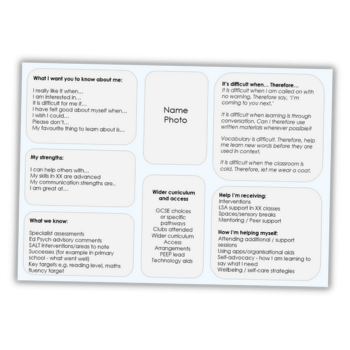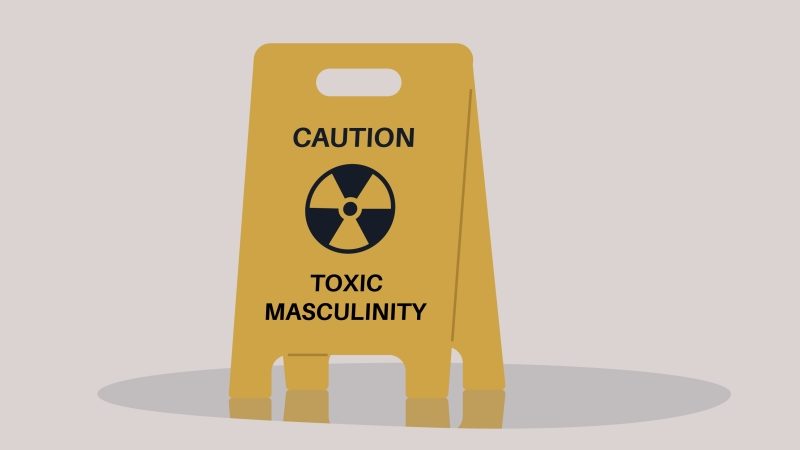Interdependent interactions – How teachers can benefit from Cooperative Learning

What if you could foster interactions among your students that mutually imparted key knowledge and skills? Jakob Werdelin and Drew Howard explain how you can via Cooperative Learning…

Collaborative or ‘Cooperative Learning’ is a term that refers to a number of activities which can stimulate thought and conversation about a given subject.
The range and scope of said thoughts and conversations can (to a sufficient degree) be controlled, which means that Cooperative Learning can facilitate the full taxonomy spectrum, from simple memorisation to analysis, debating and creating.
Cooperative Learning pre-organises peer interaction into reusable patterns, which we have dubbed ‘CLIP’s. CLIP is an acronym for:
- Cooperative
- Learning
- Interaction
- Pattern
It is a pattern in the sense that, again and again, it sequences your learners’ interaction with your materials/tasks/questions and with each other, regardless of what or whom these might be in a given activity in a given lesson. But it’s not just any interaction pattern; it’s specifically a Cooperative Learning Interaction Pattern.
What it is (and isn’t)
There are a number of definitions of what is required for a sequence of interactions to warrant the designation ‘Cooperative Learning’ as opposed to ‘group work’. We have chosen the leanest delineation by American educator Spencer Kagan, who first coined the mnemonic ‘PIES’:
- Positive interdependence
- Individual accountability
- Equal participation
- Simultaneous interaction
This sounds a lot, but it is not, because these four principles are always facilitated by the very pattern itself – no planning is required to achieve PIES. Let’s investigate how PIES is facilitated using a CLIP called Catch1Partner.
In the most basic form of Catch1Partner, each learner has a subject-relevant question on a card which they discuss in changing pairs. Positive interdependence means that both children in each pair are needed to perform the CLIP, and therefore both stand to benefit from their peer’s successful outcome.
They are not fighting for their teacher’s attention, nor are they competing to come up with the right answer first, or even for their right to speak. On the contrary, the more one partner succeeds at their task, the more the other partner stands to benefit in the form of learning, and vice versa. This mutual reliance is embedded in all steps of the interaction.
As children approach a potential partner, they might be requested to use phrases modelled by the teacher (in bold) – for example, ‘Excuse me, can I ask you a question, please?’ ‘Yes, of course you may’ (smile, turn full body towards peer, establish eye contact, appropriate physical distance and voice volume – all modelled by the teacher). They take it in turns to answer each other’s questions/ solve each other’s tasks and then swap cards and say, ‘Thank you.’
Social element
Usually, this activity is used to remind children about something that has been taught previously (known in the current zeitgeist as ‘activating prior knowledge’ or ‘revision’). However, all CLIPs can be used at any time and/or in any situation to facilitate many different objectives across a wide range of subjects.
The social element in these activities ties the process of learning to the stimulation of the brain’s pleasure responses, which many children today find mainly in addictive games and social media. The second aspect that defines Cooperative Learning – individual accountability – is the demand that both partners answer, and can do so using their own ideas and from their own unique understanding.
Equal participation entails that both partners not only answer, but have the same opportunity to speak from their own understanding and at their own length about the subject matter, irrespective of their different abilities. A key feature here is that lower- attaining children are just as important to the resolution of the CLIP steps as their higher-attaining peers.
Indeed, the inclusion automatically afforded by Cooperative Learning is one of its many unique selling points. Obviously, some will talk for longer than others, but time is limited to the interaction of asking and answering the specific question, so at some point invariably they will both have answered, then swap materials and move on to the next partner.
Finally, simultaneous interaction demands that everyone is doing all this at the same time – every single learner. There is no exception to this rule, unless there are very specific SEND-related reasons, and even then, any concessions should be temporary. For example, permission for an anxious child to remain in a corner and let people come to him should be seen as a step towards gathering the courage to mingle.
The bigger picture
CLIPs can be used wherever something is being taught, learned, produced, processed or shared. For example, Jakob is currently developing Cooperative Learning to unpick extremely complex or toxic topics that involve multiple stakeholders, such as systemic racism in schools or unaligned mutual expectations between university students, tutors and leaders.
Many of the schools we work with use rough-and- ready CLIPs in staff meetings. If children can enjoy them, why shouldn’t adults benefit? Indeed, Drew’s school, Stalham Academy, has successfully used CLIPs to get parents on board at parents’ evenings.
Notwithstanding their instant and high impact, once CLIPs have become routine (and only then), they are simple to deploy in classrooms, give teachers a strong sense of effortless control and give learners of all levels a sense of freedom and empowerment.
There is no need to buy new materials, because CLIPs use your existing resources in more powerful ways, across all Key Stages and in all subjects.
We have seen Cooperative Learning merge with existing good practice and support other approaches, invigorating and strengthening initiatives as varied as SOLO taxonomy, Philosophy for Children and Power Maths.
Evidence about the benefits of Cooperative Learning has been found consistently for over 40 years in systematic reviews and meta-analyses of research studies, according to the Sutton Trust’s Education Endowment Foundation Teaching and Learning Toolkit, and on average affords five months of additional progress per learner per year.
Silver bullets
All this praise begs the question, why doesn’t every single primary and secondary school, college and university in the world just adopt Cooperative Learning? Why isn’t every educational institution spitting out self-confident, competent masters of their own destinies, with top grades to boot?
Part of the answer lies in the unhappy conflation of Cooperative Learning with disorganised group work. For example, there seems to be a tacit acceptance among teachers that any collaborative activity decreases the quality of individual assessment, and requires you to run around keeping your charges on task.
Another is that age-old maxim that the devil is in the detail. Poorly executed Cooperative Learning is possibly worse than regular unstructured group work, because it undermines the concept and turns teachers and children away from using it. Headteachers’ fear of the Ofsted werewolf can lead to a too-desperate search for the silver bullet that will solve everything. Make no mistake – Cooperative Learning can be a silver bullet, but what good is a bullet to someone who hasn’t picked a target and doesn’t know how to maintain and operate a firearm?
Due to its step-by-step, hands-on nature, Cooperative Learning is possibly the world’s cheapest, most non-threatening and effective professional development and coaching tool for teachers and school leaders alike. But because it is precisely that – a tool – you need to know what you want to do with it, which entails investigating who you are and who you want to be as a teacher or leader.
Jakob Werdelin is a Danish teacher trainer and consultant, as well as the founder and director of UK-based Werdelin Education
Drew Howard is director of primary curriculum and pedagogy at a MAT in Norfolk
This article is based on an edited extract from their book The Beginner’s Guide to Cooperative Learning: Make your learners your main teaching resource (Crown House Publishing, £16.99)








